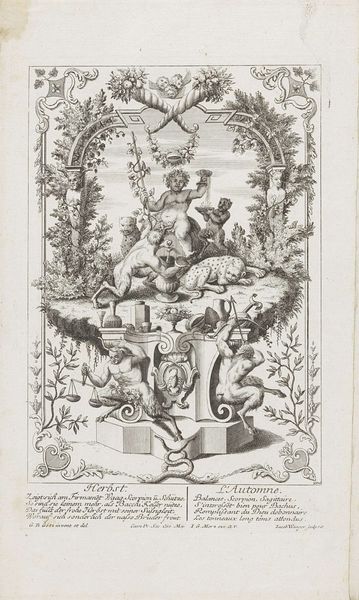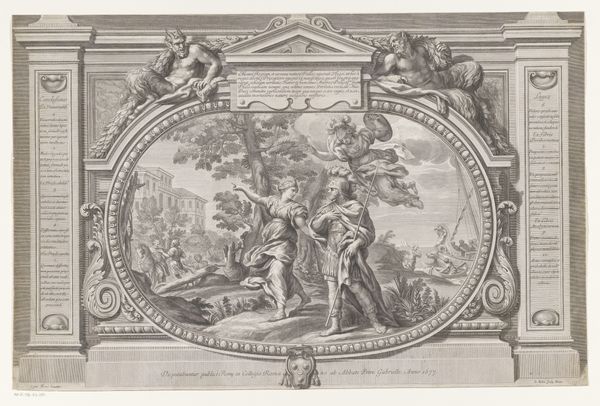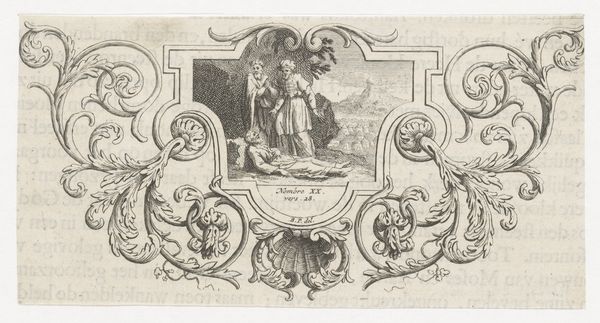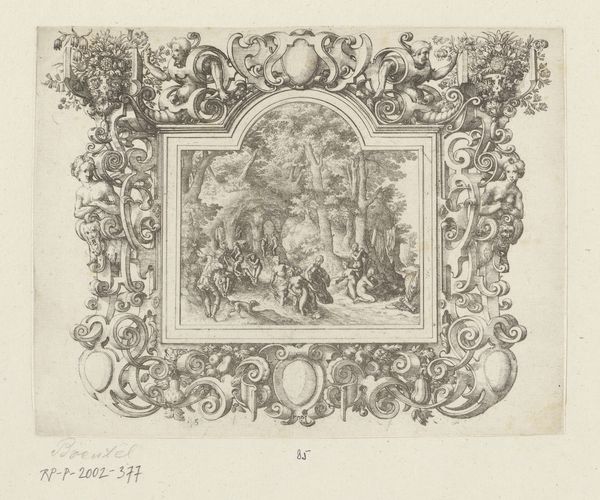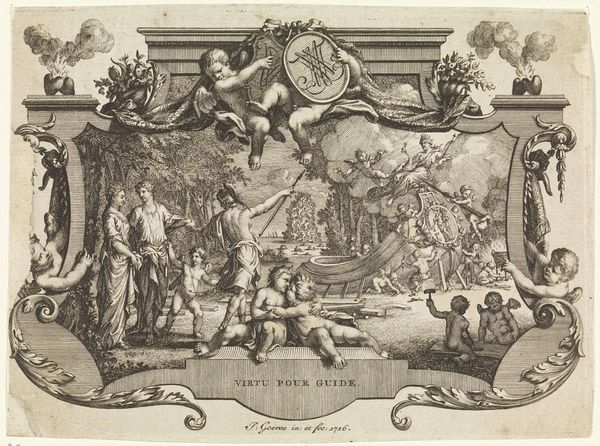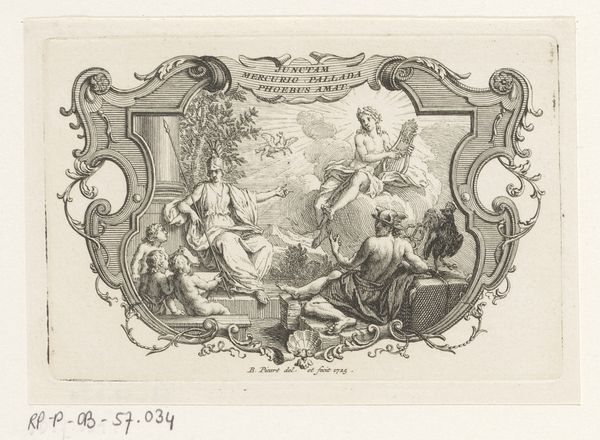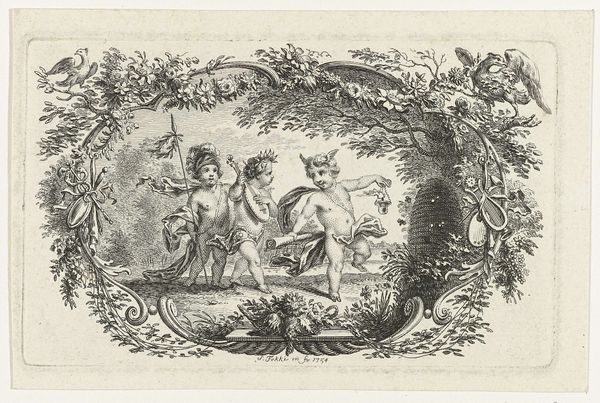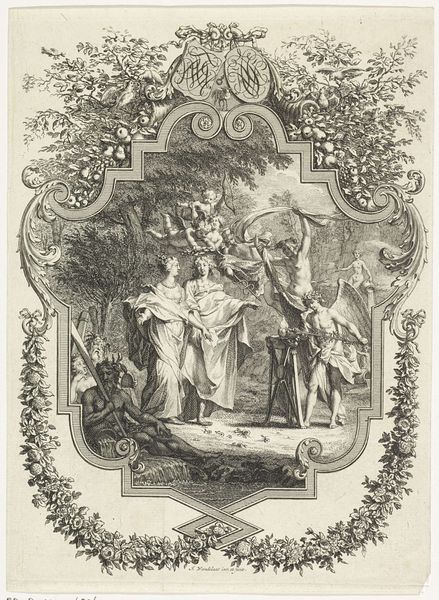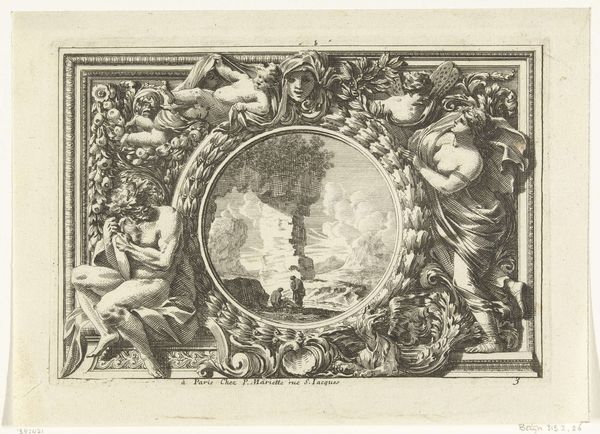
print, engraving
#
allegory
#
pen drawing
# print
#
mannerism
#
figuration
#
line
#
history-painting
#
engraving
Dimensions: width 242 mm, height 202 mm
Copyright: Rijks Museum: Open Domain
Curator: Here we have Gerard van Groeningen's "The Ten-Year-Old Human," an engraving from sometime between 1569 and 1575. Editor: My immediate reaction is that it is densely symbolic! I’m seeing an idyllic, almost mythical scene… a nursing mother, playing children, but within a very ornamental and intricate frame. Curator: Indeed. The image operates within a rich tradition of allegory. The Rijksmuseum, where this print resides, classifies it as allegorical in its figuration. It presents a vision of childhood as a stage in human development. Editor: The setting, the composition, all seem highly staged. I find myself questioning what specific social codes and ideologies it reflects. The idealized presentation of motherhood strikes me in particular. Is it reinforcing certain gender roles, ideas about nurturing, that were prominent at the time? Curator: Very likely. Mannerism, a dominant style, favored artifice and elegance. The way childhood is portrayed also has links to classical and Renaissance thinking. Ten years was perceived as a symbolic age. The active children are not simply playing; they're demonstrating developing faculties. Editor: What about the verses inscribed above and below the central image? What’s their significance to the work as a whole? They're easy to overlook amidst the complex imagery, yet they must contain important contextual information. Curator: Absolutely. It seems Van Groeningen layered text to be understood only within particular educated and cultural milieus, as were often the goals of art production. He crafted art that mirrored elite networks and reflected power dynamics through visual display and patronage. Editor: That raises so many compelling questions. This piece highlights the roles of women within society. But it's really complicated and needs more historical context to fully tease out the tensions it embodies. Curator: Right, this engraving exemplifies how art is never simply an aesthetic object; it's embedded in a network of social and intellectual exchanges. Editor: And by considering the social roles prescribed and debated within society at the time, we begin to reveal these networks in more meaningful ways.
Comments
No comments
Be the first to comment and join the conversation on the ultimate creative platform.

